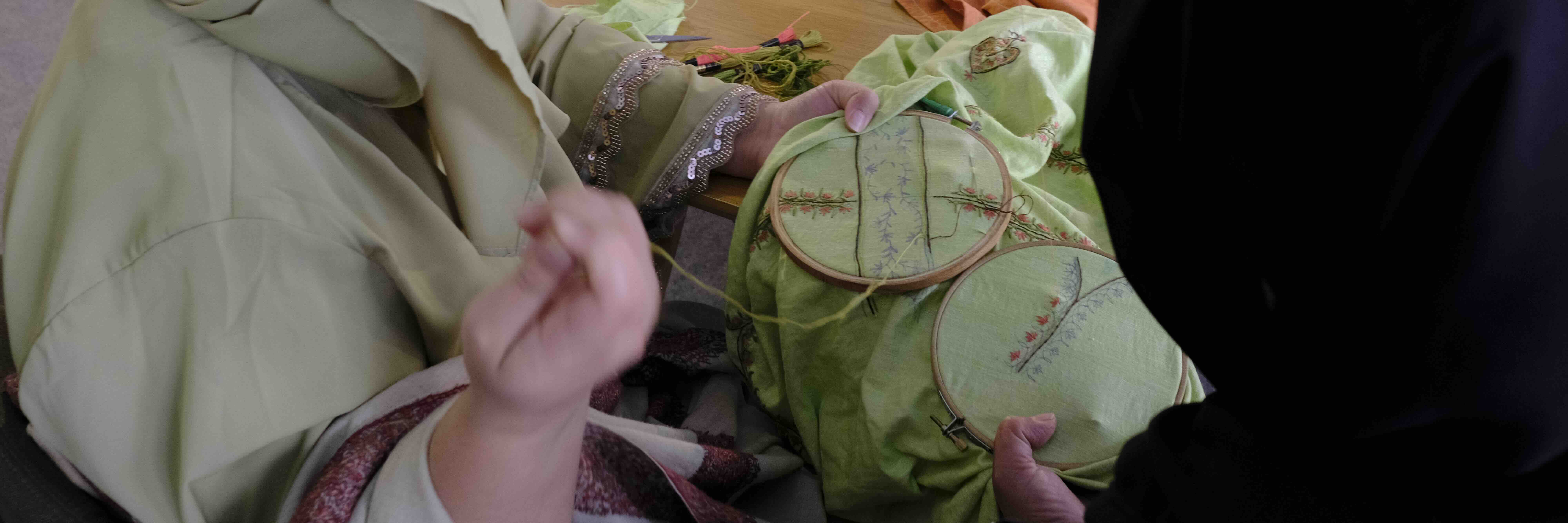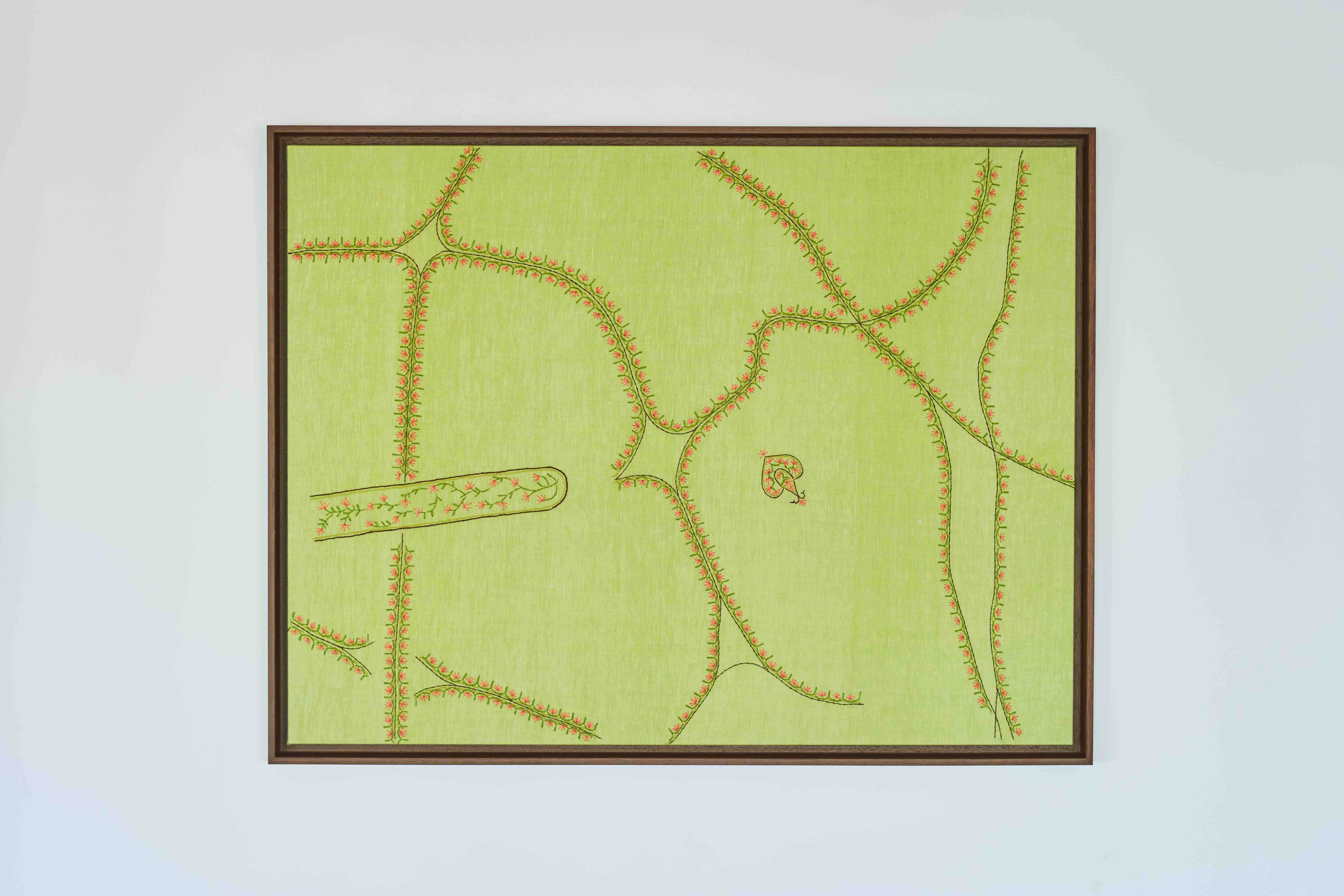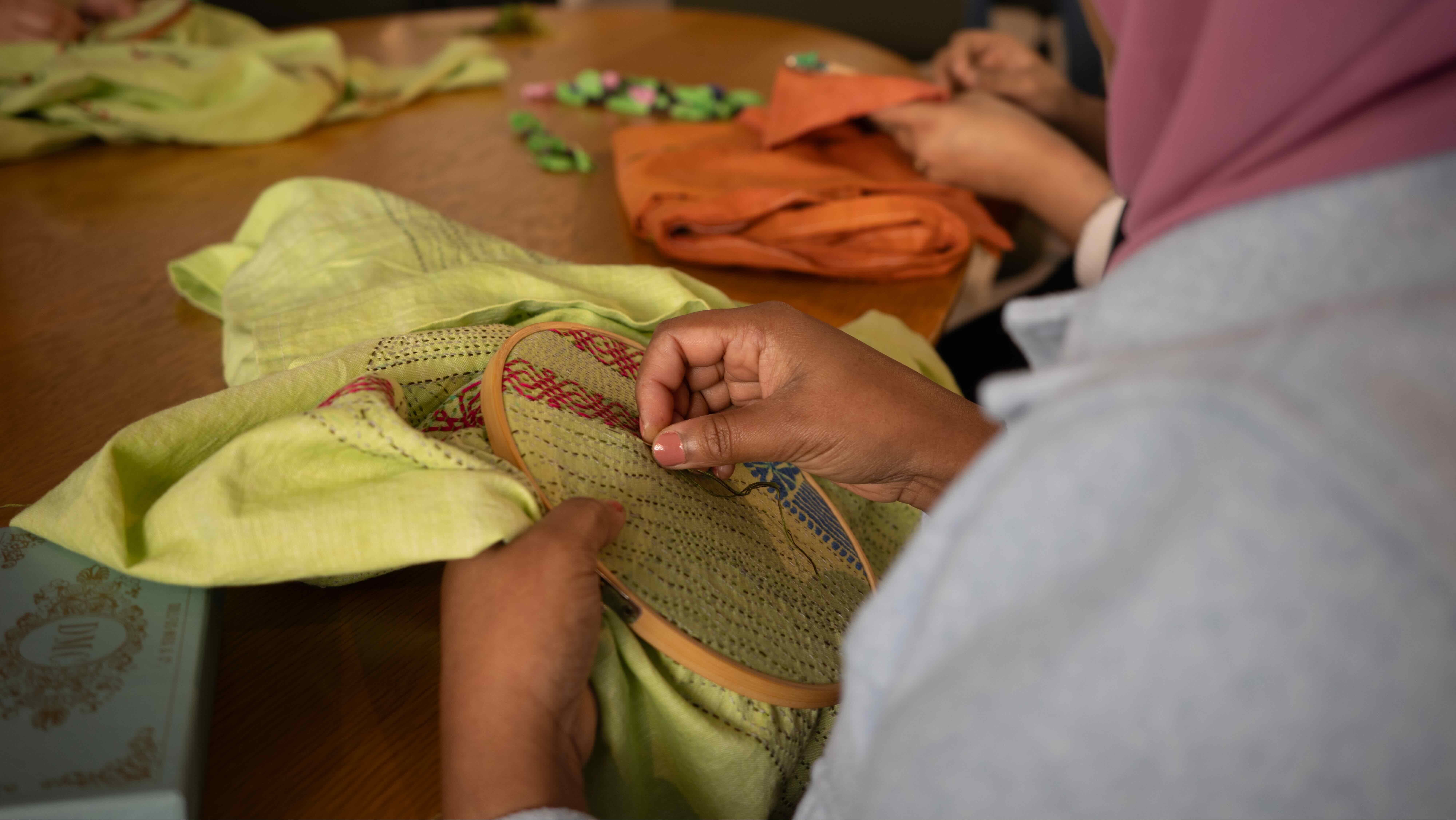Cities are more than just streets and buildings. They are living archives of memory, migration, and meaning. In this exhibition, Lisbon serves as a canvas for reimagining urban space, not a fixed entity, but an ever-shifting tapestry of human experience. Through a series of embroidered abstract maps, the artists question what it means to document a city: Who shapes its spaces? Who decides how they are seen, used, or remembered?
Maps have long been instruments of control; used by navigators as tools to impose order, hierarchy, and ownership. What happens when we reclaim that act of mapping with thread rather than lines, with touch rather than coordinates? Embroidery, often dismissed as a domestic craft, becomes a radical medium here- soft yet subversive, intimate yet insistent. Each stitch is a claim to belonging, a quiet act of resistance against rigid definitions of place. The artists use this tactile language to explore how urban spaces are imagined, built, and inhabited- not just by planners and politicians, but by the people who live in them, move through them, and make them home.

The diversity of techniques across the tapestries reflects the multiplicity of diasporic experiences. Some works are dense with intricate patterns, echoing the layered histories of migration; others are spare and open, suggesting fluidity of identity in motion. Together, they invite us to question the idea of a singular, monolithic narrative- whether of a city, a culture, or a community. This exhibition is the first in a series of dialogues that Homelore seeks to foster between diasporas and their adopted homes. It celebrates craft not as a relic of the past, but as a dynamic, evolving practice that absorbs new influences while honouring tradition.

These embroidered maps are not just artifacts, they are open invitations. They ask us to consider how home is continuously stitched. Not just from geography, but from the stories we choose to carry, adapt, and pass on.





.png)

